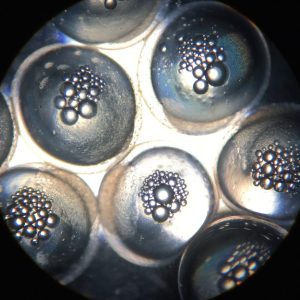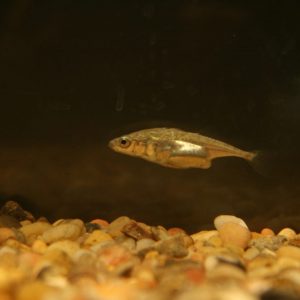OUR RESEARCH
paternal care
Parental care is fascinating for countless reasons – it’s critical for fitness, there is tremendous variation in the specific forms and manifestations of parental care across organisms, and it’s a highly dynamic interaction between relatives. One of the things that makes sticklebacks – like many other fishes – interesting is that they exhibit paternal care, where the father is solely responsible for the care of the offspring. We are very interested in the evolution, inheritance, neurogenomics and plasticity of paternal care in sticklebacks.
We’ve found that some male sticklebacks provide more care than others (Stein 2012, Stein and Bell 2015), the quantity of care received influences offspring traits (McGhee and Bell 2014), and that paternal care might have contributed to the stickleback radiation (Stein and Bell 2019). In a recent study, we found that individual differences in a key parental behavior – fanning – is highly heritable among individual male sticklebacks from the same population (Bell et al 2018). These results suggest that variation in paternal care is tractable for further genetic dissection, e.g. via QTL or GWAS, and Colby Behrens (PhD student in Evolution, Ecology and Behavior) is capitalizing on natural variation among stickleback populations in paternal care – including the so called “white sticklebacks” in Nova Scotia that do not provide care – in order to understand more about its genetic basis.
2019But paternal care is not only highly heritable among individuals, it is also highly plastic within individuals: paternal care changes not only over the course of the breeding cycle but in immediate response to threatening stimuli (Stein and Bell 2014). Moreover, Abbas Bukhari et al showed that males undergo dramatic changes in brain gene expression as they become parents, and there are fascinating neurogenomic commonalities between paternal care in a fish and maternal care in a mouse (Bukhari et al in press)!
Bell, A. M., R. M. Trapp, and J. Keagy. 2018. Paternal care is highly heritable in sticklebacks. Royal Society Open Science
Bukhari, S. A., M. C. Saul, N. James, M. Bensky, L. R. Stein, and A. M. Bell. 2019. Neurogenomic insights into paternal care and its connection to territorial aggression. Nature Communications.
McGhee, K. E., and A. M. Bell. 2014. Paternal care in a fish: epigenetics and fitness enhancing effects on offspring anxiety. Proc Biol Sci, B. 281:20141146.
Stein, L., A.M. Bell 2012. Consistent individual differences in paternal behavior in threespined sticklebacks. Current Zoology 58:45-52.
Stein, L. R., and A. M. Bell. 2014. Paternal programming in sticklebacks. Anim Behav 95:165-171.
Stein, L. R., and A. M. Bell. 2015. Consistent individual differences in paternal behavior: a field study of three-spined stickleback. Behavioral Ecology and Sociobiology 69:227-236.
Stein, L.R. and Bell, A.M. 2019. The role of variation and plasticity in parental care during the adaptive radiation of threespine sticklebacks. Evolution
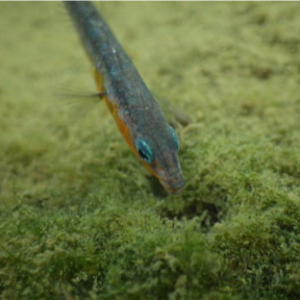

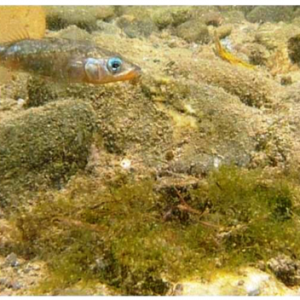
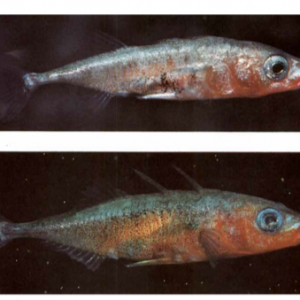
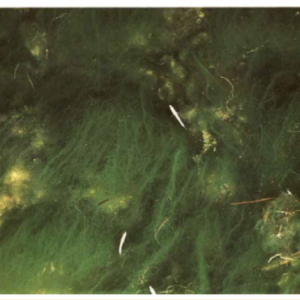
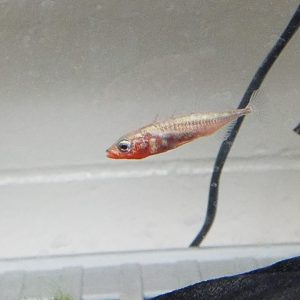
Behavioral Genomics
Behavioral traits offer exciting new opportunities for integrating quantitative genetics with results from studies of molecular mechanisms and genomics (Bell and Dochtermann 2015). The rationale is that in order to fully understand behavioral traits, they require consideration of both variation and plasticity, and the fixed and dynamic sides of the genome. The growing field of animal personality research prompts this integration because it has brought questions about how and why variation and plasticity coexist to the forefront of thinking in evolutionary and behavioral ecology. I would argue, moreover, that these features of behavioral traits (variation among individuals and plasticity within individuals) are shared with other fitness-related traits of interest to biologists, including health-related and physiological traits, therefore our findings have broad relevance (Bengston et al 2018).
When I started my own lab, the stickleback genome had just been sequenced, and I saw opportunities to use emerging genomic technologies to uncover the proximatecauses of individual differences in behavior. A genome-wide approach was appealing because the behaviors of interest are influenced by many interacting genes of small effect, and candidate genes for the behaviors explained only a small fraction of the total variation. Moreover, measuring gene expression (rather than quantifying static DNA sequence variation) was attractive because while there is a heritable component to behavioral traits, they are also plastic, and change with the environment. Instead of focusing on the static side of the genome (DNA sequence), initial studies in the lab probed behavioral variation at the molecular level by measuring brain genome-wide expression in order to learn how the genome dynamically responds to the environment. We found that the stickleback genome is highly responsive to many important aspects of the environment such as predation risk (Sanogo et al 2011), a territorial intrusion (Bukhari et al 2017) and a courtship opportunity (Sanogo and Bell 2016). An important element to this line of work includes tool development for this system. Noelle James published a method for in situ hybridization in stickleback brain tissue (James et al 2016) and is currently developing viral-mediated gene transfer methods in this system as part of an NSF EDGE grant.
Much of the behavioral genomics work in the lab is carried out in collaboration with our theme at the Carl Woese Institute for Genomic Biology. We are comparing neurogenomic responses to social opportunities and challenges among honeybees, sticklebacks and mice (Rittschof et al 2014, Saul et al 2019).
Bell, A. M., and N. A. Dochtermann. 2015. Integrating molecular mechanisms into quantitative genetics to understand consistent individual differences in behavior. Current Opinion in Behavioral Sciences 6:111-114.
Bengston S, Dahan R, Donaldson Z, Phelps SP, van Oers K, Sih A, Bell AM (2018) Genomic tools for behavioral ecologists to understand repeatable individual differences in behaviour. Nature Ecology and Evolution 2:944-955.
Bukhari, S. A., M. C. Saul, C. H. Seward, H. Zhang, M. Bensky, N. James, S. D. Zhao, S. Chandrasekaran, L. Stubbs, and A. M. Bell. 2017. Temporal dynamics of neurogenomic plasticity in response to social interactions in male threespined sticklebacks. PLOS Genetics 13:e1006840.
James N, Liu X, Bell AM (2016) A fluorescent in situ hybridization (FISH) protocol for stickleback tissue. Evolutionary Ecology Research 17: 603-617.
Rittschof CC, Bukhari SA, Sloofman LG, Troy JM, Caetano-Anolles D, Cash-Ahmed A, Kent M, Lu X, Sanogo YO, Weisner PA, Zhang H, Bell AM, Ma J, Sinha S, Robinson GE, Stubbs L (2014) Neuromolecular responses to social challenge: common mechanisms across mouse, stickleback fish, and honey bee. Proceedings of the National Academy of Sciences 111(50):17929-34.
Sanogo, Y. O., and A. M. Bell. 2016. Molecular mechanisms and the conflict between courtship and aggression in three-spined sticklebacks. 25:4368-4376.
Sanogo, Y.O, Hankison, S., Band, M., Obregon, A., Bell, A.M.. 2011. Brain transcriptomic response of threespine sticklebacks to cues of a predator. Brian, Behavior and Evolution 77: 270-285.
Saul MC, Blatti C, Yang W, Bukhari SA, Shpigler, H, Troy JM, Seward C, Sloofman L, Chandrasekaran S, Bell AM, Stubbs L, Robinson GE, Zhao SD, Sinha S (2019) Cross-species systems analysis of evolutionary toolkits of neurogenomic response to social challenge. Genes, Brain and Behavior
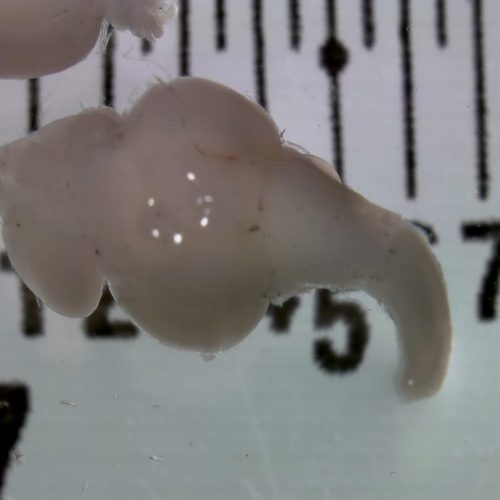
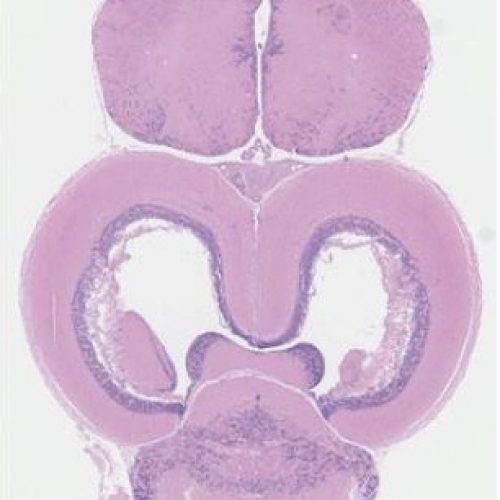


Individual Differences
A theme running throughout all of the work in the lab has to do with individual variation. Almost 20 years ago, I had the privilege of working with Andy Sih and colleagues to develop a framework for understanding the evolutionary and ecological causes and significance of behavioral variation and plasticity (Sih et al 2004a,b), which now goes by the name of behavioral syndromes and animal personality. As a PhD student working with Judy Stamps, I revisited Felicity Huntingford’s classic work on individual differences in boldness and aggression in sticklebacks (Huntingford 1976), and showed that the boldness-aggressiveness behavioral syndrome is not invariant, but it can vary over both developmental (Bell and Stamps 2004) and evolutionary timescales (Bell 2005), consistent with the hypothesis that behavioral variation and covariation is adaptive (Bell and Sih 2007). The Bell lab has continued to make important contributions to this area, including a meta-analysis of repeatability estimates (Bell et al 2009). Miles Bensky is currently studying individual differences in behavioral flexibility and persistence in sticklebacks.
Bell AM, Hankison SJ, Laskowski KL. (2009) The repeatability of behaviour: a meta-analysis. Animal Behaviour 77(4):771-783.
Bell, A.M., & Sih, A. 2007. Exposure to predation generates personality in threespined sticklebacks (Gasterosteus aculeatus). Ecology Letters 10: 828-834.
Bell, A.M. 2005. Behavioral differences between individuals and populations of threespined stickleback. Journal of Evolutionary Biology 18(2): 464-473.
Bell, A.M. & Stamps, J.A. 2004. The development of behavioral differences between individuals and populations of threespined stickleback. Animal Behaviour 68: 1339-1348.
Bensky, M., Bell, A.M. 2018. Intraspecific variation in cue-specific learning in sticklebacks. Animal Behaviour 137:161-168
Bensky, M., Paitz, R., Bell, A.M. 2017. Testing the predictions of coping styles theory in threespined sticklebacks. Behavioral Processes 136: 1-10.
Huntingford, F. A. 1976. The relationship between inter- and intra-specific aggression. Animal Behaviour 24:485-497.

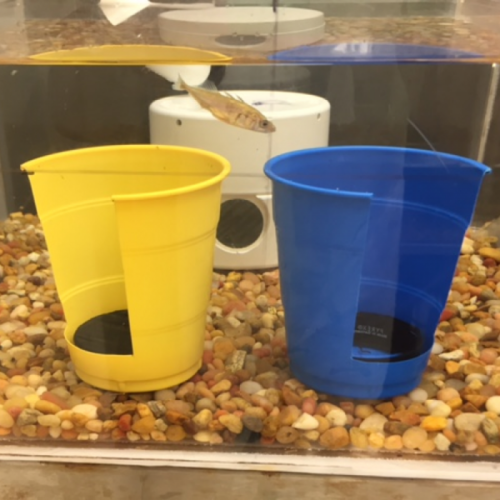

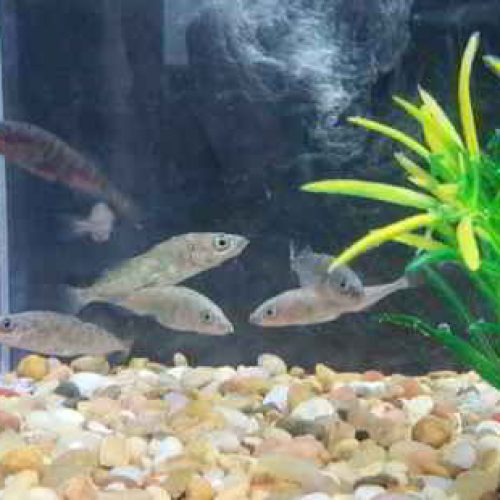
Transgenerational Plasticity
Over the past several years the lab has grown increasingly interested in the possibility that the environment experienced by parents can influence the phenotypic development of their offspring (transgenerational plasticity). We have shown that female sticklebacks are an important source of variation in their offspring, not just via their genes, but via the environment they provide for their offspring. In particular, we found that mothers exposed to threatening stimuli such as a predator produce offspring with altered behavior (Giesing et al 2011), stress response (Giesing et al 2011) and learning (Roche et al 2012). When testing the hypothesis that predator-mediated maternal effects are mediated through the glucocorticoid stress response system, Ryan Paitz discovered that embryos are capable of buffering themselves from maternal steroids by actively transporting them out of the egg (Paitz et al 2016). Katie McGhee – a former postdoc in the lab – also showed that fathers change their paternal behavior when mated to predator-exposed females (McGhee et al 2015), illustrating the dynamic interplay between mothers and fathers.
Sticklebacks are particularly interesting subjects for studying transgenerational plasticity mediated by parental behavior because fathers provide care for their developing offspring, and we’ve been interested in the possibility that the early environmental provided by fathers is important for offspring development. When she was a PhD student in the lab, Laura Stein found that fathers change the way they parent in response to predation risk (Stein and Bell 2014), and that offspring of predator exposed fathers are programmed to respond to danger (Stein and Bell 2014). Moreover, the effects of paternal experience with danger resembles the effects the of personal, early life experience with danger (Stein et al 2018). As a postdoc in the lab, Jenn Hellmann published a series of sperm-mediated paternal effects, and their consequences for multiple generations, and Jenn and Alison worked together on an article which articulates a new framework for understanding the mechanisms and multigenerational consequences of transgenerational plasticity (Bell and Hellmann 2019).
Bell AM, Hellmann J (2019) An integrative framework for understanding the mechanisms and multigenerational consequences of transgenerational plasticity. Annual Review of Ecology, Evolution and Systematics.
Giesing ER, Suski CD, Warner RE, Bell AM (2011) Female sticklebacks transfer information via eggs: effects of maternal experience with predators on offspring. Proceedings of the Royal Society of London, Series B 278(1712):1753-9.
McGhee KE, Leasure S, Feng S, Bell AM (2015) A female’s past experience with predators affects male courtship and the care her offspring will receive from their father. Proceedings of the Royal Society of London, Series B 282: 1840-1845.
McGhee KE, Bell AM (2014) Paternal care in a fish: Epigenetics and fitness enhancing effects on offspring anxiety. Proceedings of the Royal Society of London, Series B 281(1794):20141146.
Paitz R, Bukhari SA, Bell AM (2016) Stickleback embryos use ABC transporters as a buffer against exposure to maternally derived cortisol.Proceedings of the Royal Society of London, Series B. 283(1826):20152838.
Roche D, McGhee K, Bell AM (2012) Maternal predator-exposure has lifelong consequences for offspring learning in sticklebacks. Biology Letters 6:932-935.
Stein LS, and Bell AM (2014) Paternal programming in sticklebacks. Animal Behaviour 95: 165-171.
Stein LR, Bukhari SA, Bell AM (2018) Personal and transgenerational cues are nonadditive at the phenotypic and molecular level. Nature Ecology and Evolution 2: 1306-0311.
